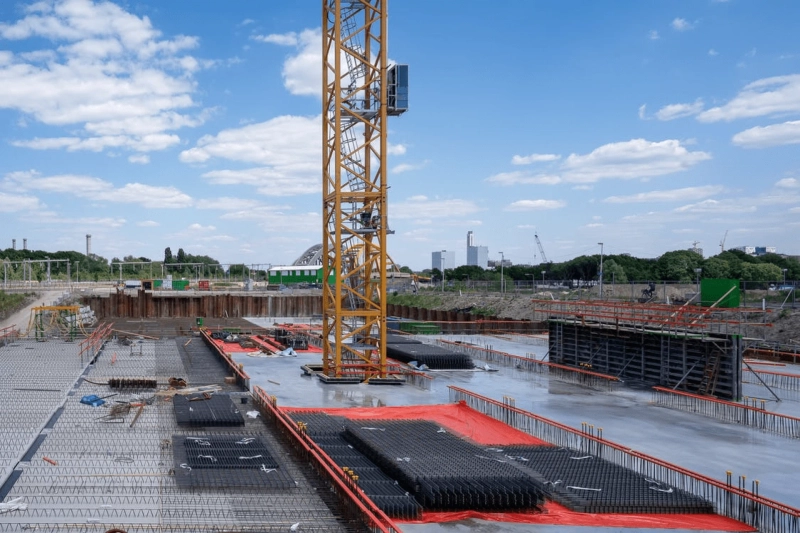A crane comes with many features and configurations. Crane operators, signalers, spotters, and riggers can perform different types of material management tasks using this machine. But it's imperative to understand a crane's working capacity and limits to maximize its benefits and ensure crane safety.
Crane Warning Systems Atlanta strives to help crane operators and spotters in making their crane operations safer and code-compliant. And that's why their crane safety product experts have helped us with this post.
Today, our readers will learn all about one major crane limit known as the Rated Capacity. It's so important that global manufacturers like RaycoWylie produce robust Rated Capacity Indicators (RCIs) to help crane personnel stay safe. So let's get into the details right away.
What is Rated Capacity in Cranes?
In simple terms, your crane's rated capacity is the total or maximum load it can lift at a given position. So it's safe to say that rated capacity not only allows crane operators to maintain their equipment's momentum and balance but also enhances crane safety.
The term rated capacity is also used to identify and determine the total lifting capacity of winches and hoists.
According to the international BS EN 13000:2004, Cranes – Mobile Cranes standards, you may also call rated capacity the Maximum or Manufacturer's Rated Capacity.
Where Can You Find the Rated Capacity Details?
Crane owners and project managers often forget the importance of training their crane crew about a crane's manual. However, crane manufacturers are always very diligent in ensuring that users have all the information to minimize risks and increase productivity.
The manufacturer's manual also entails a detailed load chart among different codes, limitations, and best practices of crane operation. Your operators, spotters, signal operators, and other crane staff must know how to read and follow a crane load chart.
Check out the RaycoWylie i4507 Rated Capacity Indictor for offshore cranes today!
How to Read a Crane's Rated Capacity on a Load or Lifting Chart?
Your crane's rated capacity is mentioned on the manufacturer-provided load chart. You'll find the gross load representing all the weight your hoist can lift.
Next to the gross load, you'll see the net load quantity. Net load is the weight that's been lifted by a crane. Experts say that the rated capacity is the net load lifted by equipment under optimum conditions.
A crane's rated capacity isn't just to determine and stay within load limits. It directly impacts several other operational factors. At Crane Warning Systems Atlanta, you can buy high-quality crane safety devices such as ATB systems, LMI devices, and anemometers. These crane warning products can be a game-changing investment for your crane crew and the equipment.
How Does Crane Rated Capacity Affect Other Crane Features?
Your crane's rated capacity can impact a lot of other crane features. For example, it determines the maximum and minimum boom length, lifting radii, and outrigger extension. The higher the rated capacity, the more your crane can extend, lift, and hoist.
As a business flourishes, it might outgrow the existing resources. The same is true with construction startups that initially deploy low-rated capacity cranes. In such situations, crane managers often plan to increase their equipment's rated capacity. And that's when they might make the mistake of hiring a non-professional.
Crane Warning Systems Atlanta strongly advises crane managers to hire an expert engineer to increase or decrease a crane's rated capacity.
How to Maintain a Safe Rated Capacity for Your Crane
Installing a rated capacity indicator is the best way to ensure that your crane equipment is safe and ideal for operations. It's a highly performance-driven tool designed to increase workplace safety and equipment health. Without adequate crane safety products and warning devices such as an RCI or LMI, you cannot minimize the risk of crane accidents and material damage.
Rated capacity is a critical crane safety aspect for crane operators, and they must have rated capacity indicators to improve their controls and visibility.
Why Should You Partner with Crane Warning Systems Atlanta?
Crane Warning Systems Atlanta is an authorized distributor of original, world-class crane safety devices and systems. The company has been offering cutting-edge crane safety equipment for over 22 years and has an impressive client base.
You can also shop for high-quality crane system displays, portable links and shackles, and more.
Check out their free-access troubleshooting guides, crane equipment wiring diagrams, and support manuals, or contact them for more details.
About the Author
Bryan is a professional crane safety engineer associated with Crane Warning Systems Atlanta. He is well-versed in different crane safety aspects and warning devices. Bryan regularly contributes to the company's website with informative guides and blogs to help their clients and readers learn all about crane safety and its importance.
0


